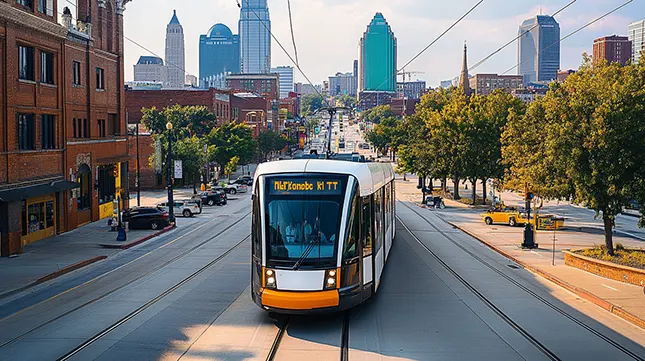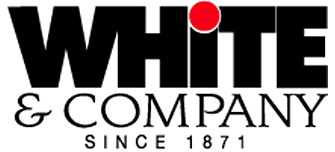Moving to USA from UK – 51 Top Emigrating Facts

Moving from the UK to the USA is a bold and life-changing adventure, but for those ready to take the leap, it offers an abundance of opportunities and experiences.
As the third-largest country in the world, the United States spans an area nearly as vast as the entire continent of Europe.
Its immense size and diversity mean there’s truly something for everyone.
Plus, with nearly 45 million immigrants already calling the USA home, more than any other country, you’re sure to find a community that welcomes you.
From the vibrant buzz of cities like New York and Los Angeles to the serene beauty of national parks and charming suburban neighbourhoods, America offers a lifestyle as varied as its landscapes.
But with 50 states to choose from, finding your perfect fit can feel like a thrilling yet daunting task.
Of course, navigating the journey to the States isn’t without its challenges.
With some of the world’s strictest immigration laws, getting there requires time, effort, and more than a little patience. But don’t let that discourage you!
If it were impossible, how could so many people have already made the move successfully?
To make your transition as smooth as possible, our guide to 50 top emigrating facts is packed with essential tips and up-to-date information.
With it, you’ll be well-prepared to confidently tackle every step of the journey and start your American dream.
1. Before You Embark: Staying Informed and Prepared

Keep up to date with the latest travel advice.
One of the most important steps before traveling to the USA is to stay informed about the latest travel advice.
The size and diversity of the United States mean that conditions can vary greatly, from weather extremes and natural disasters to occasional security concerns.
While these risks are generally minimal, being prepared ensures your safety and that of your fellow travellers.
The COVID-19 pandemic remains a factor worldwide, and entry requirements can change with little notice.
To avoid last-minute surprises, it’s essential to monitor updates and double-check the latest guidance before departure.
Thankfully, staying informed is simple.
For real-time updates on COVID-19 risks and other health-related travel advice for the USA, visit the Travel Health Pro website.
With the right preparation, you can start your journey with peace of mind and focus on the excitement of what’s to come!
If you dream of calling the United States home for good, securing the proper visa is your first essential step.
Unlike in many other nations, the American immigration process can be a tangled maze, sometimes lasting more than a year.
Fortunately, certain avenues exist to hasten approval for individuals who truly excel in their fields.
These coveted visas cater to extraordinary talents, including renowned scientists, artists, scholars, business innovators, and top-tier athletes.
They also acknowledge distinguished professors and researchers with at least three years of teaching or investigative work and seasoned multinational managers or executives who have spent time at an overseas branch of a U.S. company.
For such sought-after professionals, the path to permanent residency may be smoother and quicker.
However, for most applicants, navigating the conventional immigration channels is unavoidable.
With patience, diligence, and the right guidance, even those who follow the standard path can eventually secure their place and embrace the American life they’ve envisioned.
Over time, countless newcomers have succeeded, proving that while challenging, it’s certainly achievable.
3. Carving Your Path with a U.S. Work Visa

You will need a dedicated work Visa to find employment in the USA.
A dedicated work visa often becomes a crucial stepping stone for individuals intending to pursue employment in the United States.
The application process isn’t straightforward; each candidate must satisfy a detailed list of requirements before earning a spot in the American workforce.
Holding an advanced degree, such as a Master’s or PhD, can significantly boost your odds of approval. These credentials signal to the authorities that you bring specialised knowledge to the table.
Additionally, if your expertise falls into an occupation currently in demand, this shortage may open doors more readily.
While meeting these criteria doesn’t guarantee success, it significantly increases your chances of receiving the green light to start forging your career path in the U.S.
4. Gaining Your Visa Through Sponsored Employment
Securing a formal job offer from a U.S. employer is often the smoothest route into the country, as it dramatically reduces the likelihood of your sponsored employment visa being denied.
Securing a U.S. visa once you’ve landed a job offer generally starts with your employer filing a petition on your behalf. This petition, often for an H-1B (speciality occupation) or another relevant work category, must be approved by U.S. Citizenship and Immigration Services (USCIS).
Once approved, you’ll receive documentation allowing you to apply for a visa at a U.S. embassy or consulate in your home country.
Next, you’ll complete an online visa application (Form DS-160) and pay the required fee.
You’ll also schedule an in-person interview, during which you’ll bring your USCIS approval notice, job offer letter, academic or professional credentials, and other supporting documents that validate your qualifications.
The consular officer will ask questions about your role, employer, and intentions in the U.S.
If your visa is approved, it will be stamped in your passport, and you can then travel to the U.S. to begin working, following any restrictions set out in the visa’s terms.
5. Using Family Connections to Get Your Visa

Some people thinking of making the move will be able to use their family connections to get a visa.
Having family members already settled in the U.S. can significantly streamline the visa application process.
If you have close relatives who are U.S. citizens or lawful permanent residents, they may file a petition on your behalf, essentially sponsoring your entry and eventual residency.
The most common path is through an immediate family member, such as a spouse, parent, or child, since these categories typically enjoy faster processing times and no annual quotas.
Your relative begins this journey by submitting a petition (usually Form I-130) to U.S. Citizenship and Immigration Services (USCIS).
Once approved, it moves along to the National Visa Centre for further review, and later, you’ll attend an interview at a U.S. embassy or consulate in your home country.
Throughout this process, you must provide evidence of a genuine relationship, along with the usual documentation, proof of identity, financial support, and good moral character.
While this route is more direct, it can be lengthy and still requires patience, preparation, and diligent attention to official requirements.
The above visas will allow you to work in the US for a specific period of time.
Afterwards, you must reapply for a work visa or apply for a green card.
6. Your Path to Permanent U.S. Residency (Green Card)

A Green Card offers permanent residence in the US.
While certain visas grant temporary permission to work in the United States, you may eventually seek a more secure, long-term arrangement.
This is where the green card becomes essential, offering permanent residence rather than a simple extension of your stay.
Having a green card takes you beyond traditional immigrant status, positioning you as a resident with greater security and fewer restrictions.
However, it’s important to remember that although green cards are often viewed as indefinite, they can still be revoked if you fail to meet their legal conditions.
Many people begin with a temporary visa and later transition to a green card by following specific guidelines.
Comprehensive details on eligibility, application steps, and supporting documents are available at the U.S. government’s official site: www.uscis.gov.
Additionally, educational resources can smooth the process.
For instance, the course on Udemy walks you step-by-step through each stage, simplifying this complex journey into a clearer, more manageable experience.
7. An Entrepreneurial Avenue to U.S. Residency
Establishing your venture on American soil can provide a less conventional yet highly rewarding path toward securing a green card.
As a business owner, you are not tied to an employer or dependent on a U.S. citizen sponsor, which gives you more independence throughout the immigration process.
To boost your chances, focus on demonstrating how your company contributes to America’s well-being, whether that involves creating new jobs, offering innovative solutions, or fostering economic growth.
When the U.S. authorities recognise that your enterprise is in the nation’s best interest, obtaining permanent residency becomes more attainable.
For detailed guidelines and up-to-date regulations on this route, visit uscis.gov and explore their official resources before moving forward.
8. Your Journey to U.S. Citizenship
Acquiring U.S. citizenship involves a series of key milestones that, while seemingly straightforward, demand thorough preparation.
First, you’ll need to secure lawful permanent residency, often by obtaining a green card.
After establishing a continuous presence in the country for at least five years, you become eligible to start the naturalisation process.
This includes submitting the proper application forms, successfully completing both English language and U.S. history tests, and participating in a formal citizenship ceremony where you’ll pledge your loyalty to the nation.
Finally, as a newly recognised American, you can apply for a U.S. passport to enjoy the full benefits of citizenship.
Throughout these steps, don’t underestimate the importance of careful research.
Requirements and regulations can shift over time, so staying informed is crucial.
You can turn to the U.S. Citizenship and Immigration Services website to guide you confidently towards your goal of becoming a member of American society.

There are some major differences in how healthcare works in the UK compared to the USA.
When moving to the United States, it’s important to understand that, unlike certain Commonwealth countries, the U.S. does not offer government-funded healthcare for newcomers.
Instead, medical insurance is often secured through private providers, making it essential to organise adequate coverage as soon as you can.
Many employers include health benefits as part of their compensation packages, offering what is usually the most accessible way to cover these expenses.
In fact, prospective employers are frequently open to discussing and adjusting health coverage options to meet your needs.
For detailed information on available plans, associated costs, and how to get started, visit the official Health Insurance Marketplace.
Early planning will help ensure peace of mind and safeguard your well-being and that of your family.
10. Discovering Career Prospects in the U.S.

There is a wide range of job opportunities in various sectors in the US.
The United States offers a wide range of work experiences, from cutting-edge internships to well-established corporate positions.
While it may feel daunting to secure employment without a green card, it’s far from impossible if you adopt a patient and thoughtful approach.
Many prominent industries, such as aerospace, consumer goods, electronics, and automotive manufacturing, regularly seek skilled professionals.
With numerous global companies calling the U.S. home, anyone relocating from the UK can tap into vast opportunities.
For those who’ve already landed a position, the potential for rapid professional growth is impressive.
If you’re still on the hunt, start your journey at www.USAJobs.gov or explore other reputable online platforms.
This resource could potentially help launch your new US career!
11. Paying Your US Taxes
Unlike the UK’s relatively simple approach, the American tax system operates on a more layered structure.
Instead of three brackets, there are currently seven, and even at the top level, the rate stays below 40%.
Federal income tax rates begin at 10% and rise incrementally to 37%, influenced by factors such as whether you are single, married, or filing as head of household.
For example, earning the equivalent of £50,000 would likely place you in the 22% category.
This detailed framework exists partly because healthcare is privately managed, and the vast economic range across the country makes multiple tiers feasible.
To stay updated on the latest figures and official rules, check out the IRS website.
(These tax brackets are as per December 2024 figures)
12. Planning for Your Pension Abroad

Retirees can still receive their British state pension in the US.
If you’ve built up sufficient UK National Insurance contributions, receiving your British State Pension after settling in the United States is still possible, with annual increases remaining intact.
Over in America, retirement funds often blend government-backed benefits with private pensions, such as the 401(k).
Neither option is tax-deductible, and the standard age to claim full payments stands at 67.
While you can dip into these funds earlier, at around 62, doing so could trim your monthly amount by about 20–30%.
Payments can be sent directly to your new American bank account or back to a UK institution.
As regulations can shift, thorough research is essential.
For the latest 2024 guidance, visit YourMoney or consider insights from Harrison Brook.
13. If you Claim UK Benefits
Before heading across the Atlantic, it’s worth noting that leaving the UK will affect any financial assistance you currently receive.
According to the latest 2024 guidelines, income-based benefits including Pension Credit and Housing Benefit, generally stop if you remain outside the UK for more than four weeks.
Once you settle in the United States, securing a Social Security Number should be high on your to-do list.
This unique identifier, much like the UK’s National Insurance number, is crucial for everyday activities, from starting a new job to opening a bank account. Without it, navigating the American system will be challenging.
There is plenty of information on U.S. Social Security requirements so ensure you’re prepared before relocating.
14. Driving in the US – American Road Rules

It may take some time to get used to driving in America.
Adjusting to the traffic landscape in the United States can feel daunting at first, particularly if you’re used to driving on the left.
Across much of the country, it’s common and entirely legal, as of 2024, to turn right at a red light, which may throw you off if you’re new to this practice.
More challenging still, the shift to driving on the right side of the road demands extra attention.
Before you hop behind the wheel, familiarising yourself with local regulations is crucial.
For official guidance, you can visit the US Government website.
Additionally, our own RAC has some invaluable information for anyone attempting to drive in the States.
Finally, be prepared for plenty of horn blasts. In the US, car horns often serve as a release valve for driver tension, so try not to take them personally!
15. U.S. Driving License Requirements
If you’re arriving from the UK, using your existing UK license for short visits up to 12 months is possible.
Staying longer than a year means that you must apply for a state-issued license.
If you hold a UK photo card license, carry both the card and its paper counterpart.
For those still with the older paper license, it’s essential to apply for an International Driving Permit.
Remember, each state sets its own licensing rules and often insists you secure a local license within 30 to 60 days of settling in.
There is no single US driving license, so check with each state’s motor vehicle department.
Take a look at the wikiHow website for a complete guide on how to get your driver’s license in the USA.
16. Casting Your UK Vote
Even after settling abroad, your UK voting rights don’t vanish.
As of 2024, you’re eligible to register as an overseas voter for up to 15 years following your departure.
If you’re keen to stay involved, hop over to the UK Government website to understand how to apply to vote from the US.
Voting in the United States is different.
Without citizenship, you’re not entitled to participate in American elections, meaning green card holders and permanent residents remain on the sidelines when it comes to the U.S. ballot box.
17. US Birth Registration

Birth Registration rules are slightly different in America so brush up on these differences.
In the United States, the process of registering a child’s birth when you’re from overseas involves meeting the requirements set by local authorities and states.
If you intend to start a family in America, you must register your child’s birth by law, just as in the UK. Once finalised, you’ll receive a U.S. birth certificate.
As of 2024, the country continues to grant citizenship to anyone born on American soil, regardless of the parent’s nationality.
Although there’s ongoing debate and past attempts to alter this policy, it currently remains in place as of December 2024.
Visit the US Birth Certificate website for the most up-to-date information and official guidance.
Stay informed so you fully understand your family’s rights should you welcome a new addition while living in the U.S.
18. Dealing with Loss Abroad
Coping with a death overseas is never easy, but understanding the correct procedures can help ease some of the burden.
In the United States, as of 2024, you’ll need to register the death with the local state authorities where it occurred.
The US Government has a very informative guide on what you need to do in the sad event of losing a loved one.
Afterwards, you may also choose to record the loss with the UK’s official channels, ensuring proper documentation back home. Reach out to “Tell Us Once” for further guidance.
Their support can help you navigate UK official notifications, paperwork, and other administrative tasks, making a difficult period a little more manageable.
Getting Married in the USA
19. Tying the Knot with a Plan

Make sure you understand the marriage visa process in America.
Navigating immigration requirements for living in the United States is already complex, and the prospect of marriage can add another layer of detail.
If you’re a U.S. citizen or hold permanent residency, getting married could provide a straightforward route for your partner to secure a green card.
Of course, love should be the main reason you walk down the aisle, not just a shortcut to residency.
Still, understanding the marriage-based visa process gives you both peace of mind.
If you intend to marry while living in America, you can discover more about spouse sponsorship and the necessary documentation HERE.
20. Expressing Your Religious Rights
In the United States, the Constitution guarantees everyone can freely select and express their religious beliefs.
This openness has created a vast spiritual tapestry where Christianity remains the majority faith.
As of 2024, around 63% of Americans describe themselves as Christian, with roughly 20% identifying as Catholic and many others following various traditions or none at all.
You may find that religion plays a more visible role in everyday life compared to the UK, though attitudes differ depending on where you settle.
Diversity is the word; for the most part, people are left to express their religion as they see fit.
21. Embracing the Stars and Stripes

Embrace the patriotic way of life in America.
Studies compiled by Gallup show around 70% of Americans openly express strong national pride.
This deep attachment to the flag, the anthem, and their country’s ideals can feel surprising when coming from the more understated atmosphere in the UK.
You’ll encounter flags displayed on front lawns, lively discussions about politics, and a general willingness to share personal viewpoints on national matters.
Instead of taking offence, try to appreciate this perspective.
Embracing America’s distinctive sense of patriotism can help you understand what fuels this enthusiasm, making it easier to settle in and feel at home.
22. Bringing Your Pet to the USA

There are certain rules and regulations you will need to meet when moving to the US with a pet.
Bringing your furry companion into the United States can be relatively hassle-free if you understand and follow the correct procedures.
As of 2024, the U.S. Centres for Disease Control and Prevention (CDC) and the U.S. Department of Agriculture maintain clear guidelines to safeguard animal and public health.
Start by having your pet fitted with a microchip for identification, then ensure their vaccinations, especially rabies, are up to date.
Next, obtain a veterinary health certificate confirming that your companion is fit for travel.
Depending on the country of origin, some animals may benefit from additional recommended vaccinations.
Requirements can vary, so it’s best to consult the official regulations posted on the USDA website before you arrange transport.
With proper planning, you’ll help your beloved friend make a safe, comfortable transition into their new American home.
23. Understanding the U.S. 911 System
Throughout the United States, the primary telephone number to call in an emergency is 911.
Thanks to a robust and well-coordinated infrastructure stretching across both bustling cities and remote towns, first responders are trained and equipped to handle a wide range of urgent situations.
What’s more, their arrival times are impressively swift, even when covering expansive areas.
Many states also employ Quick Response Services (QRS), offering vital on-site evaluation and initial care without patient transport.
These teams often bridge the gap before an ambulance crew reaches the scene.
According to the latest data (2024), average response times across the country remain around eight minutes, although more isolated regions may experience slightly longer waits.
Still, the U.S. emergency response network continuously improves its services, striving to keep everyone safe no matter where they reside.
24. Balancing Work and Personal Time in the U.S.
It is difficult to make a general assumption about a country’s work/life balance because of the various factors that will affect this. Finances and occupation are two points in question.
Your career often sets the tone for how much room you have to spend time with friends and family or pursue leisure activities.
Whether you’re performing intricate heart surgeries or guiding students through their lessons, the hours you spend on the job can shape your evenings, weekends, and downtime.
Obviously, your disposable income contributes to what you can and cannot afford to do.
Despite its bustling economy, the United States still struggles to foster a balanced relationship between employment and personal life.
According to the latest 2024 data from Axios, approximately 11% of American workers routinely put in more than 50 hours each week.
Similarly, updated information from the OECD places the U.S. 29th out of 41 countries when it comes to achieving a healthy work-life balance.
These figures suggest that finding the right equilibrium remains a real challenge, encouraging those who plan to relocate here to consider both their professional direction and how it will impact their time away from work.
25. Quality of Life in America
When thinking about where you’ll settle in the United States, it’s worth taking a closer look at the various elements that shape an individual’s overall comfort and happiness.
Standard of living, which covers financial stability, essential amenities, and everyday necessities, often overlaps with what we call quality of life, a broader term encompassing personal fulfilment, community ties, and well-being.
According to the latest findings from the OECD in 2024, while the U.S. might not dominate every category of the quality-of-life index, it holds a leading position in housing.
Additionally, it performs above the international average in areas like income and wealth, environmental conditions, civic participation, and social support networks.
Ultimately, understanding these dimensions and comparing them with what you have in the UK will help you decide if America provides the right environment to cultivate your personal sense of contentment.
26. Holiday in America

Make the most of your ‘vacation’ time.
In the United States, holidays (or, as the Americans say, “vacation time”) often remain firmly within domestic borders.
Under half of all Americans hold a valid passport, making international journeys less common.
Meanwhile, around 80% of citizens in the United Kingdom possess passports and frequently head abroad for their breaks.
Perhaps this isn’t surprising considering America’s sheer scale.
It offers a vast array of landscapes, cultural experiences, and weather conditions without ever leaving home soil.
27. Climate Conditions in America
The United States spans a wide range of landscapes, resulting in varying climate conditions from coast to coast, though many areas fall under a general continental pattern.
According to the latest 2024 data from the U.S. Environmental Protection Agency, overall air quality in America remains somewhat higher in pollutants compared to numerous other developed nations.
Eastern regions tend to grapple with more pronounced pollution than the West.
Meanwhile, places like Utah, Idaho, Colorado, and New Mexico typically record lower particle concentrations.
Scientists suggest that periodic wildfires, which frequently ignite in western states during drier months, play a major role in shaping these patterns.
Discovering these differences will help you prepare for the environmental conditions you may encounter when settling into your new life in the United States
28. U.S. Population Trends
Over the past century, the United States population has surged from around 100 million to approximately 333 million in 2024.
The East Coast has the highest population density, a testament to its historical significance as the first region settled by Europeans.
Meanwhile, though narrower in width, the West Coast is home to major urban centres like Los Angeles, San Francisco, and Seattle, contributing to its substantial population.
In contrast, states such as Utah, Idaho, Colorado, and New Mexico remain sparsely populated, which is consistent with their lower pollution levels and expansive landscapes.
This diverse distribution offers new emigrants a variety of living environments, whether they seek the hustle of city life or the tranquillity of more rural areas.
For detailed demographic insights, click here.
29. Exploring Flora & Fauna

America is home to some unique habitats that we simply don’t have in the UK.
The United States is home to a stunning array of environments, including deserts, mountains, swamps, and grasslands, each nurturing diverse plant and animal life.
In Texas, for example, the elusive Living Rock Cactus blends seamlessly into its surroundings, offering a unique sight for those who seek it out.
Meanwhile, the Hawaiian Islands showcase remarkable wildlife, such as the Koki’o Flower, which adorns trees up to five meters tall.
This rich biodiversity provides new residents with endless opportunities to explore and connect with nature.
To find out more about what you can expect to encounter with America’s natural beauty, visit nps.gov.
30. America’s Wildlife Wonderland

There are a host of animals to see in the US that can’t be found back home.
The United States boasts an impressive variety of wildlife, with countless unique species thriving across its vast landscapes.
From the tropical Hawaiian Islands, where the rare Hawaiian seal lives, to the expansive plains, where the elusive black-footed ferret roams, the country offers habitats for an extraordinary range of animals.
Common sights include the familiar groundhog, adding to the rich tapestry of American fauna.
The U.S. is home to over 400 mammal species, more than 800 bird species, and upwards of 10,000 insect species.
This incredible biodiversity enriches the natural environment and provides endless opportunities for nature enthusiasts to explore and appreciate.
Whether you’re hiking in national parks or exploring local wildlife reserves, America’s natural heritage is sure to inspire and amaze.
31. Diverse Weather & Climate
America boasts an incredibly varied climate, making pinpointing average temperatures and weather patterns nationwide challenging.
From towering mountain ranges to expansive coastal plains, each region experiences its own unique weather conditions.
For instance, in Alabama, January temperatures can dip to around 2°C (36°F) while July temperatures soar to approximately 33°C (91°F).
In stark contrast, Alaska faces much colder extremes, with January lows reaching -11.6°C (11°F) and July highs climbing to about 18.6°C (65°F).
This vast climatic diversity means that your weather experience will greatly depend on where you choose to live.
To get the most accurate and up-to-date weather information for your specific area, visit reliable real-time weather websites like Weather.com or National Weather Service.
32. Premier Education Opportunities

There are some excellent places to study in the US.
Relocating to the United States from the UK opens the door to a wealth of exceptional educational institutions. For those making this huge move with their families.
While you might miss renowned universities like Oxford and Cambridge, the U.S. boasts its own prestigious names, such as MIT, Harvard, and Stanford.
Massachusetts stands out as the leading state for education, home to some of the country’s top-ranking schools.
Following closely are New Jersey, Florida, and Washington, each offering a multitude of outstanding educational facilities and esteemed universities.
Whether you’re seeking world-class undergraduate programs or advanced research opportunities, these states provide an environment conducive to academic excellence and innovation.
According to the latest 2024 rankings, Massachusetts continues to lead in educational quality, making it an ideal destination for students and families prioritising top-tier education.
From kindergarten right through to university, when you move to America, you will find that the systems in place for education are at the highest level.
33. Setting Up Your U.S. Bank Account

It is important to take the time to set up an American bank account when moving here.
Opening a bank account in the United States can be straightforward, especially if you have a local address.
Many American banks require proof of residence to establish an account, viewing applicants without a U.S. address as a higher risk.
If you haven’t secured a U.S. address yet, you might find it challenging to open an account directly with a traditional bank.
In such cases, international banks with branches in both the UK and the U.S., like HSBC, offer a viable alternative, providing seamless banking solutions across borders.
Having a stable U.S. address significantly enhances your ability to access various banking services, including online banking, credit options, and personalised support.
For those still settling in, leveraging international banks can ensure you maintain financial continuity during your transition.
To explore your options and get started, visit HSBC.
The United States is known for its intricate bureaucratic system, which can often seem overwhelming to newcomers.
This complex framework fosters a highly competitive environment where attention to detail is paramount.
Every regulation is meticulously followed, ensuring that all procedures are correctly executed.
While some may label this as excessive “red tape,” it is crucial for maintaining the system’s integrity and minimizing errors.
This strict adherence to rules can be both a challenge and a safeguard, providing a reliable structure for businesses and individuals alike.
Understanding and navigating this bureaucracy is essential to your transition to life in the States, whether you’re setting up a new home, starting a business, or accessing public services.
Embracing this meticulous approach can ultimately lead to greater efficiency and fewer complications.
For more insights on navigating U.S. bureaucratic systems, visit the U.S. Government’s official site.
35. Embracing American Culture: Differences from the UK

You will quickly find that there are plenty of cultural differences between the UK and the US.
Relocating from the UK to the United States introduces a mix of familiar and new cultural experiences.
While language isn’t a barrier since both countries speak English, British idioms and humour often don’t translate well in the U.S., where Americans typically prefer more straightforward or slapstick comedy over British sarcasm.
Social interactions also differ; Americans are generally more outgoing and direct, whereas Brits might come across as quieter and more reserved.
Additionally, the ways of making friends, finding jobs, and interacting in the workplace follow different norms across the Atlantic.
A significant change you’ll notice is the approach to paid leave.
Most American companies offer around 10 days of paid vacation annually, and some require a year of employment before you can access this benefit.
Despite these differences, many cultural nuances become easier to navigate once you experience them firsthand, helping you to integrate into American life smoothly.
36. Starting Anew – Enjoying Your New Life
The United States has long been a top choice for expatriates, thanks to its vast landscapes, diverse climates, and stunning scenery across every region.
Whether you’re seeking a new career opportunity, exciting challenges, or simply a change of environment, America offers endless possibilities to suit your aspirations.
From bustling cities to serene countryside, there’s a perfect spot for everyone.
While adapting to cultural differences can take time, many find that the unique experiences and opportunities available make the transition worthwhile.
Ready to make the move?
Discover more about starting your journey in the USA with White & Company.
We have written several blogs specifically aimed at those considering a move to America: Buying a House in USA as an Expat & Cost of Living in UK vs USA
37. Redefining the American Dream in Today’s Landscape
The traditional notion of the American Dream has shifted, becoming less attainable for many.
Once a beacon of equal opportunity, recent years have seen stricter immigration policies that limit access for individuals from various countries.
However, for those moving from the UK, the dream remains achievable.
British expatriates can still pursue their aspirations in the United States by securing stable employment and establishing a reliable livelihood.
Despite the challenges, the promise of success and personal growth continues to draw UK nationals to America.
Discover how White & Company can support your journey to achieving the American Dream in 2024.
38. Embracing American Friendliness
Moving to the United States means immersing yourself in a notably warm and outgoing culture.
Unlike the more reserved British demeanour, Americans are typically open and eager to engage in conversation, even with strangers.
This friendly approach can initially feel like a culture shock and a little overwhelming, but it often leads to new friendships and networking opportunities.
Your British accent is sure to catch the attention of Americans, sparking conversations wherever you go.
Embrace this approachable nature, and you’ll find it easier to integrate and feel at home in your new environment.
39. Making Friends in the USA

Take the time to meet new people when moving the the US, your British accent is a great talking point!
The friendly and welcoming spirit of Americans makes building new friendships a breeze.
According to BBC America, one of the best ways to connect is through cooking and baking, as sharing food is a beloved tradition here.
Americans enjoy preparing generous meals for guests and often bring dishes to gatherings and BBQs.
Additionally, Americans are proactive in starting conversations, ensuring you never feel alone.
Whether you’re attending social events or casual meetups, there are countless opportunities to form meaningful relationships.
It is not uncommon for neighbours to call and introduce themselves when you first move into your American home.
Embrace these warm interactions and quickly feel at home in your new community.
40. About the U.S. Real Estate Landscape

It’s important to have a grasp of the American real estate space.
Max – the figures/stats I could find were still more or less the same as the original blog.
Planning a move from the UK to the United States? You’ve likely begun exploring the American housing market at some point.
Land prices in the U.S. are generally more affordable than in the UK, allowing for the construction of spacious homes without breaking the bank.
Of course, the size and cost can vary depending on your chosen location.
As of early 2024, the U.S. property market remains robust, with the median home price reaching approximately $412,000 (£324,740), according to Forbes.
Forbes also provides a list of the Median house price by state if you are interested.
However, some analysts predict a slight market dip and expect the median price to adjust to around $390,000 (£305,000) by the end of the year/beginning of 2025.
If it happens, this potential decrease could offer buyers more space for their investment.
It would mark the first annual decline in home prices since 2012.
Now could be a good time to buy your American home.
41. The American Rental Landscape
Nearly half of Americans opt to rent their homes, and as a newcomer, renting is likely your first step upon arriving in the USA.
The rental sector remains vibrant, though this growth can present challenges for prospective tenants.
According to a recent Rent.com report, rental prices have been steadily increasing, but there are promising signs for 2024.
Data from Zumper indicates that the rental market is beginning to stabilise, with expectations of reduced competition and more affordable rates this year.
This shift offers a favourable environment for renters seeking better deals and less stressful search experiences.
42. Public Transportation Options

There are plenty of options when it comes to public transport.
When relocating to the United States, understanding the public transportation landscape is essential.
The primary modes of transit include traditional bus networks, bus rapid transit systems, and intercity bus services.
Subways and trams are widely available in urban areas, providing convenient travel within cities.
For business professionals, taxis and trains are preferred for their speed and efficiency in moving between destinations quickly.
Major cities like New York and Chicago offer extensive subway systems, while services like Greyhound and Megabus offer a connection to the wider regions of America.
Staying informed about local transit options can make your move smoother and enhance your daily commute.
Take a look at USAHello for some interesting insights about using public transport when you live in the US.
43. A melting pot of languages
Thankfully, relocating to the United States means you won’t need to master a completely new language, as English remains the primary language.
However, the U.S. is a melting pot of languages beyond English.
Spanish is the second most spoken language, with around 40 million native speakers in 2024, followed by Chinese, which now boasts approximately 4 million speakers.
Additionally, languages such as French, Tagalog (from the Philippines), Vietnamese, and Korean are widely spoken across the country.
This rich linguistic landscape makes it easier for newcomers to find communities and resources in their native languages, fostering a more inclusive and welcoming environment for everyone.
44. Decoding American Slang
Get ready to immerse yourself in a sea of new slang and expressions that might sound unfamiliar at first.
Here are some common terms you’re likely to encounter.
Some will already be familiar, but perhaps others not so much:
- Buck – Refers to one American dollar.
- Amped – Means being extremely excited or enthusiastic.
- Bet – Used to agree with something, similar to saying “okay” or “sure.”
- Bounce – To leave a place quickly.
- Flex – To show off or brag about something.
- Clapback – A swift and sharp response to criticism or an insult.
- Zonked – Feeling completely exhausted.
- John Hancock – A playful term for a signature.
- Gassed – Full of energy or extremely excited.
- Ghost – To suddenly cut off all communication with someone.
- Lit – Describes something exciting or excellent.
- Salty – Feeling bitter or upset about something.
- Throw shade – To subtly insult or criticize someone.
Getting to know these terms will help you blend in and communicate more naturally in your new American environment.
45. Dining in America: A Feast of Flavors and Portions

There are simply so many new foods to enjoy when moving to the states.
In the United States, food is on a whole other level!
Beware, dining out often means generous servings, with restaurants serving meal portions that are much, much larger than in the UK.
While some establishments are beginning to offer more modest portions, hearty servings remain prevalent.
Fast food is extremely popular, with over 200,000 quick-service restaurants nationwide finding a quick meal is incredibly easy.
There is good from all over the world; however, America’s favourite foods remain pizza, burgers, fried chicken, hot dogs, and apple pie!
Whether you’re craving a gourmet meal or a quick bite, America caters to all tastes, often serving dishes in substantial portions.
While indulging is part of the experience, enjoying these offerings in moderation is wise to maintain a balanced diet.
46. Mastering Tipping Etiquette in the USA
For British expats, the American tipping culture can be a real eye-opener.
In the U.S., tipping is essentially a standard practice, unlike in the UK, where it is a discretionary gesture.
Waiting staff often rely on tips to supplement their income, as their base pay is typically set at or near the federal minimum wage of $7.25 per hour.
The standard tipping rate in restaurants ranges from 15% to 20% of the total bill, and failing to meet this amount may raise eyebrows or even prompt a polite challenge from your server.
While this custom might seem unusual at first, it’s part of ensuring good service and supporting hospitality workers.
Make sure to budget for tipping when dining out!
47. Understanding Sales Tax in the USA
When shopping in the United States, don’t be fooled by the price tag, what you see isn’t what you pay!
Unlike in the UK, where taxes are typically included in the displayed price, most U.S. prices are shown before tax.
Sales tax rates vary widely depending on the state, ranging from 0% in states like Oregon and Delaware to over 9% in places like California.
Federal tax is not applied to retail purchases, but state and local taxes can significantly bump up the total cost at checkout.
This system might catch newcomers off guard initially, but it’s a common practice in the U.S., and you’ll soon adapt.
Always factor in the extra cost when budgeting!
48. Cost of Living in the USA: The Highs and Lows

There are some major differences in living costs that you will quickly pick up on.
The cost of living in the United States has significantly shifted in recent years, with some essentials costing more than in the UK.
Groceries, for instance, tend to be pricier, with staples like bread, potatoes, and cheese carrying much higher price tags.
However, cigarettes are notably cheaper in the U.S., often by as much as 78%, and milk by almost 50%.
Public transport offers savings of around 15-18% compared to the UK, and fuel prices remain considerably lower.
On average, in 2024, they will be under £1 per litre, compared to almost twice that for the UK.
New cars can also be more affordable, depending on the model.
While dining out costs are similar to those in the UK, imported items like coffee and bottled beverages may cost more.
Utility bills, including electricity and water, are typically around 30% cheaper.
For a detailed cost breakdown of what things cost compared to the UK, visit Numbeo.
49. Exploring Nearby Getaways: A World of Travel Opportunities
Moving to the U.S. opens the door to countless travel possibilities.
Whether you’re exploring iconic American cities, venturing into the stunning landscapes of Canada, or basking on Mexico’s tropical beaches, you’ll find no shortage of incredible destinations.
For a taste of the Caribbean, Puerto Rico offers the perfect island escape, and adventurous souls might set their sights even further afield, such as Chile’s breathtaking Andes.
Before setting off, ensure your British passport is up to date or begin the process of obtaining a U.S. passport if you’ve gained citizenship.
Some destinations may have specific entry requirements, so checking ahead is always wise.
With so much to explore, your next adventure is just around the corner!
50. Sporting Life in the USA

If you are a sports fan there is plenty on offer in the USA.
In the U.S., football (or soccer) is a secondary sport to American favourites like the NFL (National Football League), NBA (National Basketball Association), and MLB (Major League Baseball).
Game days are a cultural phenomenon, with lively crowds and roaring screens dominating bars and pubs.
Prepare for an energetic atmosphere and the noise levels to match!
If you’re missing the Premier League, don’t worry.
Staying connected to UK football is easy with streaming services like Sky Go, which many expats use to follow matches from the comfort of their homes.
Whether you’re immersing yourself in America’s love for baseball or sticking with your favourite UK team, the sports scene offers something for every fan.
51. Crime and Safety: Staying Informed in the USA
Safety concerns are often at the top of the minds of newcomers to the United States.
While the availability of firearms and incidents of gun violence, including mass shootings, have garnered international attention, it’s crucial to understand that crime rates vary significantly across this vast country.
Some cities and neighbourhoods are more prone to crime, while others are exceptionally safe.
When choosing where to live, research local crime statistics using tools like NeighborhoodScout or FBI crime data to make informed decisions.
Despite the media focus, the likelihood of being directly affected by gun violence remains statistically low for most residents.
Staying aware of your surroundings and prioritising safety is essential, but the U.S. offers many secure and welcoming communities for expats.
Moving to USA from UK with White & Company

Relocating to the USA can feel overwhelming, but with White & Company by your side, the process becomes smooth and hassle-free.
With decades of expertise, we’ve earned our reputation as a trusted leader in international removals.
Our membership in BAR, FIDI, and OMNI ensures our commitment to excellence and professionalism, giving you peace of mind throughout your move.
From expertly packing your valuable, fragile, or bulky items to coordinating export logistics, our experienced UK-based teams carefully handle every detail.
Whether you prefer a convenient virtual survey or an in-home consultation, we tailor our services to meet your needs.
Ready to start your journey?
Call us today, fill out our quick quote form, or chat with our Bot, and let’s make your move to the USA effortless!

Max is a seasoned writer and blogger in the real estate and home moving sectors, as well as a knowledgeable source of information for expatriates living and working abroad. His detailed insights have helped thousands of people move and live abroad with greater simplicity and ease.
Posted in: News
Leave a Comment (0) ↓





